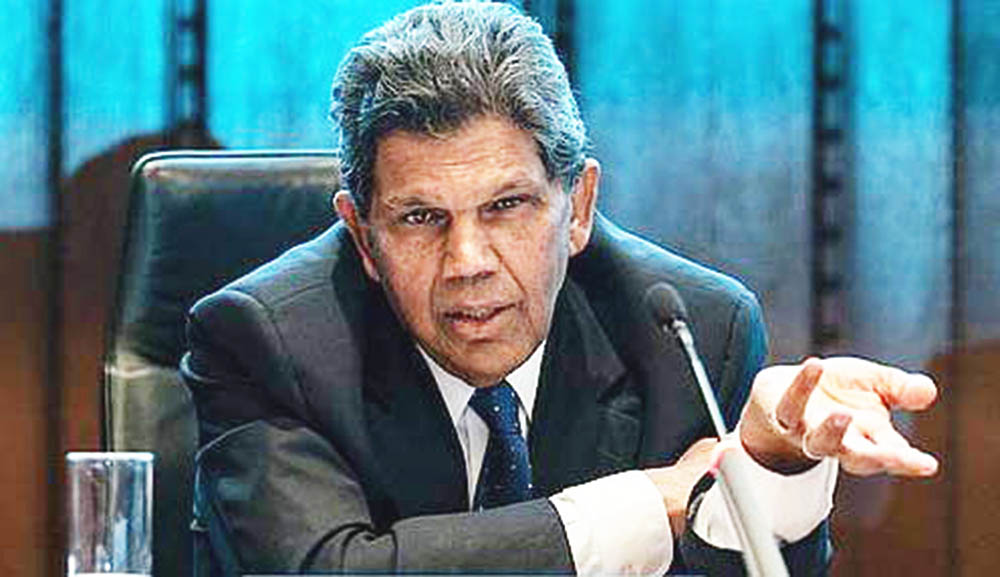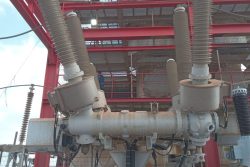When the late Lloyd Luckhoo, Q.C. introduced me for admission to practice at the Bar of Guyana in the summer of 1969, three years after Guyana’s independence, I addressed the court on the importance of the rule of law in our newly independent country. Mr Justice van Sertima, presiding, responded by signalling how important it would be for us to develop a distinctly Guyanese/Caribbean jurisprudence. He cited as an example, the issue of the rights of children born out of wedlock where a new jurisprudence was evolving in the Caribbean going beyond the common law.
In my book on the Guyana Court of Appeal, then the highest court in the land, I cited pronouncements by our great Chancellors such as J.O.F. Haynes and E.V. Luckhoo on the importance of developing a Guyanese judicial philosophy, building on, and adapting the common law to the needs of a young, multi-cultural nation. In researching the book, I interviewed some of our great judges of appeal such as Chancellor E.M.V. Crane, Ronald Luckhoo, and Maurice Churaman. They were all conscious of the importance of developing a Guyanese judicial philosophy. I have correspondence from some of them on this.
Two of our great Attorneys General, Dr. Fenton Ramsahoye and Dr. Mohammed Shahabuddin left us with landmark scholarly contributions to the judicial philosophy of Guyana, the former on Land Law in Guyana and the latter on Constitutional Law in Guyana. They were both members of the Governments they served, but rose above partisan service to leave their imprint on our legal heritage. We have not seen such contributions after them.
And now, whichever way it is decided on appeal, the Honourable Justice Sandil Kissoon’s decision in the environmental protection case will have contributed to the demarcation of judicial philosophy in Guyana at a crucial time in the history of the country – and of the world as it struggles to save the Earth and its inhabitants from destruction. For the Judge’s decision represents a judicial philosophy in stark contrast to that of the respondents/appellants. The appellate court(s) will need to reflect most carefully on where they stand in this choice of judicial philosophy.
The first point to note is the Judge’s appreciation of the realities of conditions on the ground in Guyana. At page 22 of his Judgement, he stated: “Guyana has a nascent oil and gas sector. It is a new frontier where there is an absence of capacity, oversight, expertise, experience or an established regulatory framework. Traditional institutions and bodies discharging public functions lack capacity and are without experienced knowledgeable or skilled personnel”. In other words, the country is at grave risk unless it treads with the utmost caution.
The second point to note is that the learned Judge’s decision comes down firmly in favour of a judicial philosophy of protection as opposed to the respondent/appellant’s approach of ‘let us see how things turn out’. As the Judge put it, “these proceedings raised an issue of grave importance of national significance for the well-being of the environment, the citizens and the State.” (p.19)
The third point to note is that the Judge’s decision articulates an imperative duty of strict compliance with the law in order to protect the environment and the planet, as opposed to a philosophy of ‘we need the funds and are doing the best we can’. What is involved here is protection of the right to life, the right to existence. Unfortunate admonitions that judges must tread with care in these matters can only cause consternation.
The fourth point to note is that the Judge’s decision comes down on the side of an immediate duty of compliance with the law, rather than an approach of laissez-faire, giving time to the respondents to comply. At page 49 of the Judgment, the Judge recalled that the Environment Permit was issued eleven months ago and held that: “any liberal interpretation applied to the time construct for performance of an obligation under Condition 14 had long expired.”
The fifth point to note is that, in these circumstances, the Judge was satisfied that the application before him was “justifiable in the public interest”, that the applicants had legal standing, and that the EPA was “amenable to Judicial Review by virtue of its public function.” (p. 19.) Restrictions on standing in “such an environment of weak institutions without capacity lends to disaster and a denial of access to justice.” (p. 22).
The Judge rejected the EPA’s submission that “he who asserts must prove” (p. 14), and that “there is no obligation on the EPA to cancel an Environmental Permit for proven breaches of a condition.” (p.10). Since the judgment is being appealed, we will not repeat the Judge’s castigation of the EPA.
In its public statement, carried in the Stabroek News on 11 May, the EPA stated that its approach to compliance and enforcement “is in keeping with international standards.” It had “consulted practice in several jurisdictions…and found that despite the fact that there was full liability for oil spill on the part of operators, no jurisdiction had unlimited/uncapped Financial Assurance”. The EPA had received the estimate of US$1.5 to 2 billion dollars. “Negotiations had concluded on April 27, 2023 on the amount guaranteed, the terms and conditions for renegotiations based on increased risks, and next steps if unfulfilled obligations exceeded the (US$)2 billion guaranteed amounts”.
Judge Kissoon had not been satisfied with this laissez-faire approach. In fact, he held that “These arguments on the part of Esso and the Agency are entirely without merit and have no basis in law, fact and circumstance.” (p.44). Furthermore, “In this case, the Environmental Permit mandates uncapped liability in view of the nature of the petroleum production activity as a source of significant environmental impact. Esso, the Permit Holder, is in breach of this obligation and the attempt to procure and substitute a diluted Parent Company Guarantee that is inconsistent with its obligation under Condition 14 of uncapped or unlimited liability does not constitute performance or compliance with its obligations.” (pp. 47-48).
The Judge added: “It is simply not open to the Permit Holder to say it is engaged in a frolic of its own, aided and abetted by the EPA, to unilaterally, arbitrarily and unlawfully cap its unlimited liability and financial assurance. A Parent Company or Affiliate Company indemnity or guarantee to the extent of two billion dollars does not fulfil the obligations of the Permit Holder at Condition 14:10 and, in such circumstances, Esso will remain in breach.”
Here we see a marked contrast in judicial philosophy: the learned judge is saying that there must be strict compliance with the letter and spirit of the law because of the dangers involved. The Respondent Agency is saying that it engaged in negotiations, out of the public view, on a pragmatic outcome. The issue is one of fundamental importance for Guyana: strict compliance with the law or out of the public negotiations for a laissez-faire approach.
The stakes are high for Guyana, Guyanese and the world. This case, involving Guyanese judicial philosophy, also has implications for global judicial philosophy when it comes to protection of the planet and its inhabitants. What’s it to be? A strict, mandatory duty of protection under the law, or laissez-faire and hope for the best? The Honourable Judge chose a strict, mandatory duty of protection. A heavy burden now descends on the shoulders of the appellate court(s).







